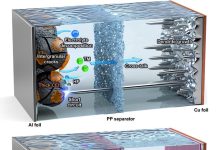
After nearly seven decades, scientists have finally confirmed a bold idea first proposed in 1958: that vitamin B1, or thiamine, can form a special kind of molecule in the body to help power essential chemical reactions.
What makes this discovery even more remarkable is that they were able to isolate this unstable molecule in water—something long thought to be impossible.
The molecule is called a carbene, a carbon atom that has only six electrons instead of the usual eight.
Because of this, carbenes are usually extremely reactive and short-lived, especially in water where they tend to fall apart instantly.
But back in 1958, chemist Ronald Breslow suggested that vitamin B1 might create a carbene-like structure inside our cells to help certain biochemical processes happen.
No one could prove it at the time because these molecules were too unstable to study.
Now, a research team led by Professor Vincent Lavallo at the University of California, Riverside, has finally made it happen.
They didn’t just create a carbene in water—they wrapped it in a protective molecular “suit of armor” to keep it from falling apart.
This allowed them to isolate the carbene, seal it in a tube, and watch it stay stable for months. They confirmed its structure using powerful scientific tools like X-ray imaging and nuclear magnetic resonance.
“This is the first time a stable carbene has been observed in water,” said Lavallo. “People thought it was a crazy idea, but it turns out Breslow was right all along.”
The breakthrough came not from trying to prove an old theory, but from the team’s work exploring reactive molecules in general. Lead author Varun Raviprolu, who worked on the study as a graduate student and is now at UCLA, said they were surprised to discover that their work ended up confirming Breslow’s 67-year-old hypothesis.
Besides solving a long-standing scientific mystery, the discovery could have major real-world benefits. Carbenes are often used in industrial chemistry to support metal-based catalysts—compounds that help make medicines, fuels, and materials.
Currently, many of these reactions use harmful solvents. But water is cheap, safe, and eco-friendly. If more reactions could happen in water using stabilized carbenes like this one, it could lead to cleaner and more sustainable chemical manufacturing.
This finding also opens the door to discovering other reactive molecules in water—just like the ones inside our cells, which are mostly made of water themselves.
“What once seemed impossible is now bottled in a lab,” Lavallo said. “It’s a powerful reminder of how far science can go when we keep pushing the boundaries.”



